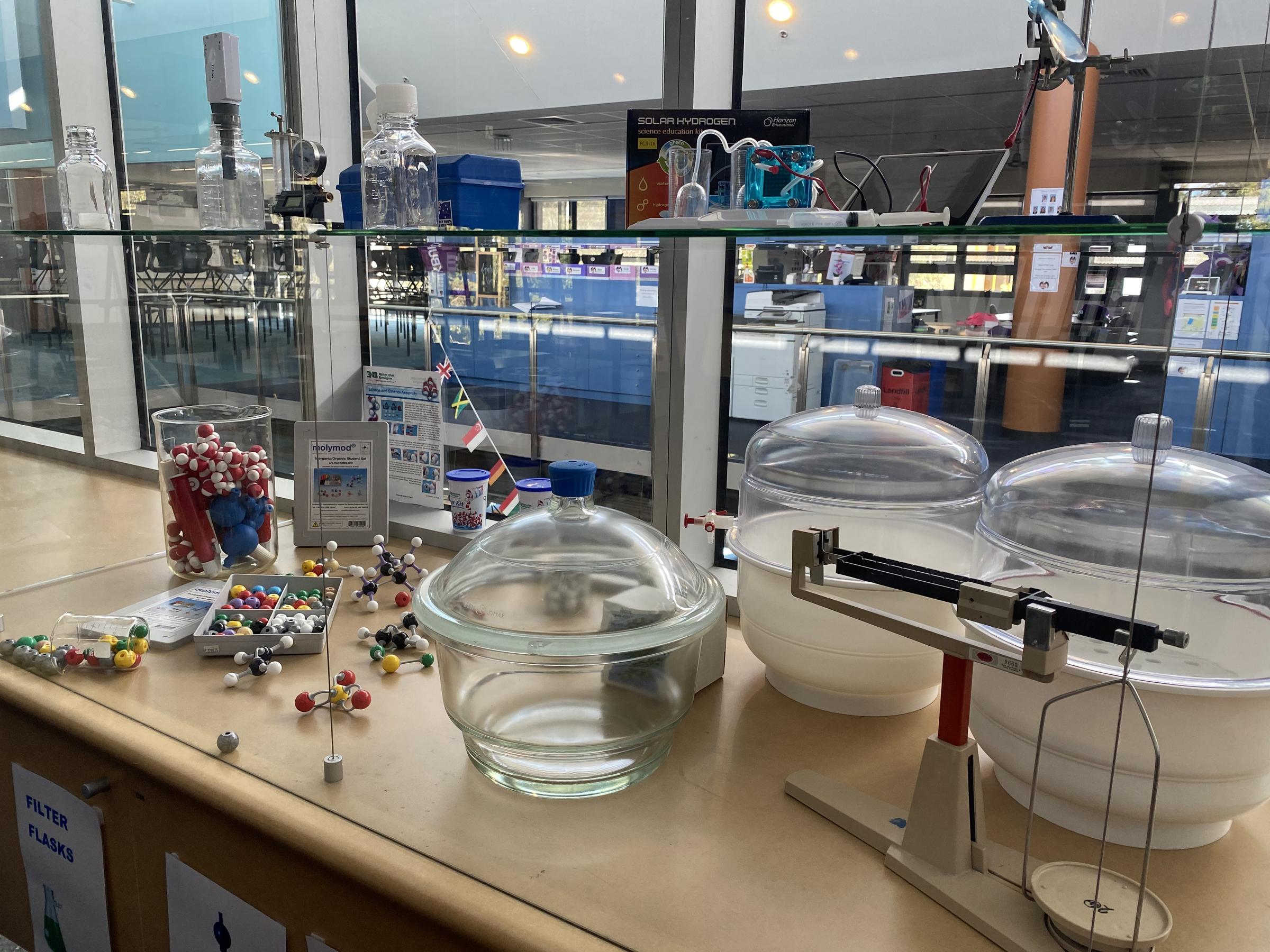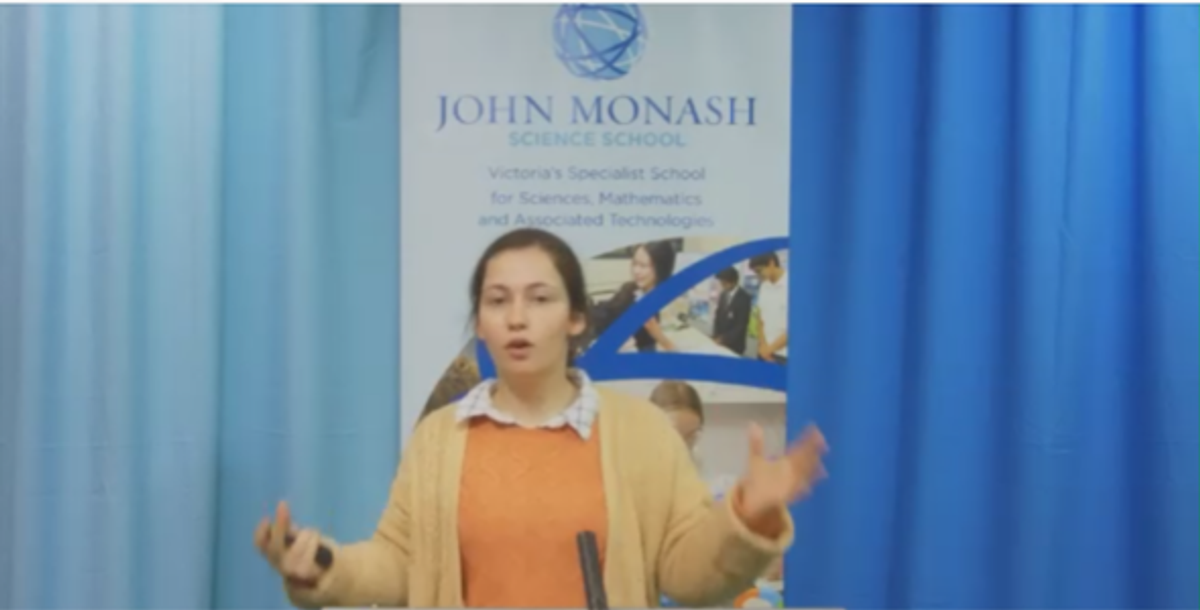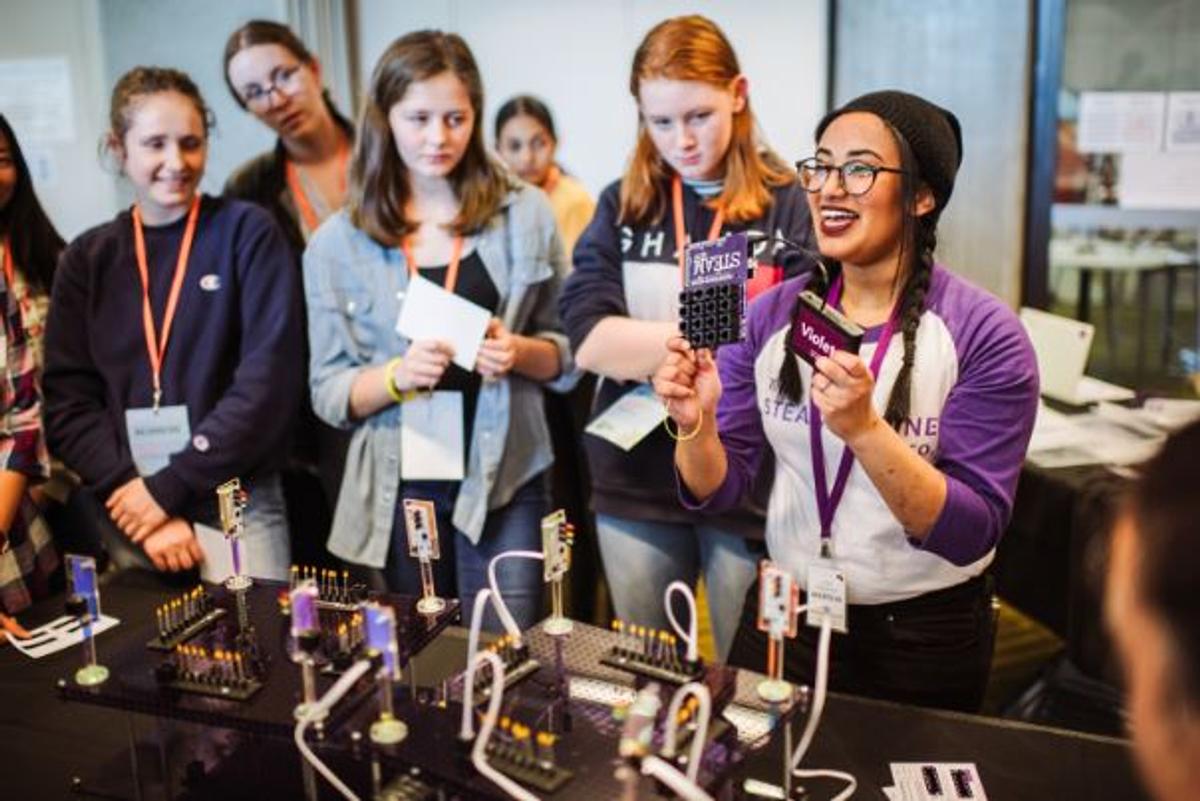Articles of interest

Krystal De Napoli
Last Friday we were lucky enough to have Krystal De Napoli speak at our Virtual online assembly. Krystal spoke passionately to over 650 students and staff online about Indigenous Astronomy.
Krystal is a Kamilaroi woman from rural North-East Victoria undertaking an undergraduate degree in astrophysics at Monash University.
She has been delivering a series of public talks on the topic of Indigenous Astronomy, presenting the knowledge gathered from Aboriginal and Torres Strait Islander elders, and researchers across Australia which describe the intimate, complex understanding our First Nations people had of the night’s sky and its objects.
We are also lucky enough to have her teach a few classes a week in our ESV students.
Robogals
Marissa Thomas is a JMSS alumni student doing wonderful things with Robogals inspiring girls, in particular to pursue careers like engineering.
The recent article was published in https://www.createdigital.org.au/
Click hear to read the article about Marissa and her Robogals team-
https://www.createdigital.org.au/engineering-student-affordable-robotics-kits/
Sleeping
Having issues with sleeping? Trouble calming down at night? Here are some great techniques and tips to help from the Wellbeing Team.
Four Years of Calculations Lead to Insights Into Muon Anomaly
Argonne National Laboratory
Christina Nunez
May 5, 2020
A multi-institutional team of researchers used Argonne National Laboratory's Mira supercomputer to attempt to demystify a discrepancy between established particle physics theory and lab measurements in gauging the behavior of a subatomic particle called the muon.
The measurement concerns the muon's magnetic moment, which defines how the particle wobbles when interacting with an external magnetic field. The team employed Mira for four years to calculate the mathematical equations of quantum chromodynamics, which encode all possible strong muon interactions.
Mira's massively parallel system produced the first-ever result for hadronic light-by-light scattering's contribution to the muon anomalous magnetic moment. The University of Connecticut's Thomas Blum said, "We are waiting to see whether the results ... point to new physics, or whether the current Standard Model is still the best theory we have to explain nature."




